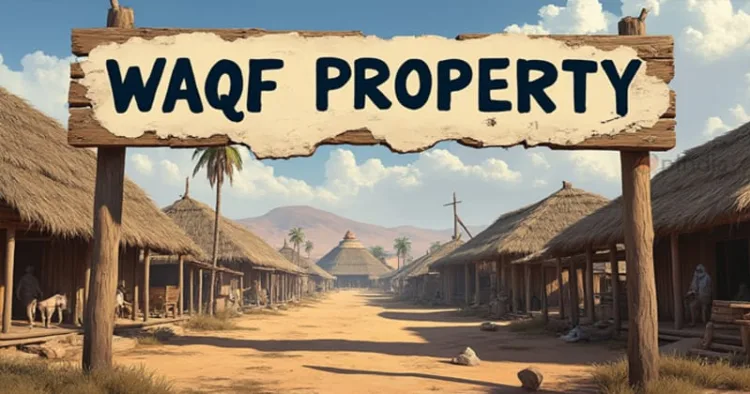The Ministry of Minority Affairs recently provided crucial details in Parliament, disclosing that Tamil Nadu tops the list of states with the highest number of illegally occupied properties by Waqf, followed by Andhra Pradesh, Punjab, Uttarakhand, and Jammu & Kashmir. According to the government’s report, Tamil Nadu alone accounts for 734 of the 994 illegally occupied properties. Andhra Pradesh comes second with 152 properties, while Punjab has 63, Uttarakhand 11, and Jammu and Kashmir 10.
The Growing Problem of Waqf Land Occupation
The Ministry’s statement underscores that the Waqf has more than 8 lakh immovable properties across India. These properties are meant to be used for religious, educational, and charitable purposes, as stipulated by the Waqf Act. However, concerns have been raised about the illegal occupation of several of these lands, which has caused significant distress among locals and property owners.
While the Waqf’s intention is to preserve properties for religious and community purposes, the problem arises when these properties are occupied unlawfully, often leading to disputes and complications in land administration. As revealed, the Waqf Board’s illegal possession of properties is not confined to a few isolated areas; rather, it has become a widespread issue affecting multiple states.
Properties Under Illegal Occupation: A Statewise Breakdown
Tamil Nadu (734 properties): The state of Tamil Nadu leads with 734 properties under illegal occupation by the Waqf. This has become a point of contention, with landowners and local communities raising concerns about the growing presence of such encroachments, especially in densely populated areas.
Andhra Pradesh (152 properties): Andhra Pradesh is the second most affected state, with 152 properties occupied illegally by the Waqf. The state has seen a rise in such cases, contributing to tensions between the Waqf authorities and private landowners.
Punjab (63 properties): Punjab has 63 properties under illegal possession by the Waqf, further highlighting the widespread nature of the issue across different regions of India.
Uttarakhand (11 properties): Despite being a smaller number, the illegal occupation of properties in Uttarakhand adds to the concern over the management and control of Waqf lands across the country.
Jammu & Kashmir (10 properties): Jammu & Kashmir, with 10 properties under illegal occupation, also faces the issue of Waqf encroachment, though the scale is much smaller compared to other states.
ASI Properties
In addition to the illegal occupation of properties under the Waqf, the Archaeological Survey of India (ASI) has reported that 250 of its own properties have been taken over by the Waqf Board. Initially, this figure was thought to be 120, but following further investigation, it was revised to 250. This includes properties of historical and cultural importance, such as the Jama Masjid in Firozshah Kotla, Delhi, the Chhoti Gumti Tomb in RK Puram, and the Hauz Khas Masjid and Idgah. These properties, which are not only of religious significance but also have heritage value, have become embroiled in ownership disputes, complicating efforts to protect India’s cultural legacy.
The Government’s Stance and Call for Reform
The Union government has taken steps to address this issue, stressing that no new land has been allocated to the Waqf since 2019. However, the existing illegal occupations continue to persist, causing frustration among citizens and leading to legal battles. The government has been under increasing pressure to take action, with many calling for a comprehensive review of the Waqf Board’s activities and stricter enforcement of the Waqf Act to ensure that its land is used solely for charitable and religious purposes.
Moreover, the involvement of the ASI in the issue further highlights the urgent need for a transparent and accountable system of land management for both religious and historical sites in the country. The growing number of illegally occupied properties not only raises questions about Waqf’s land holdings but also about the broader issue of land governance and the protection of heritage sites in India.



















Comments